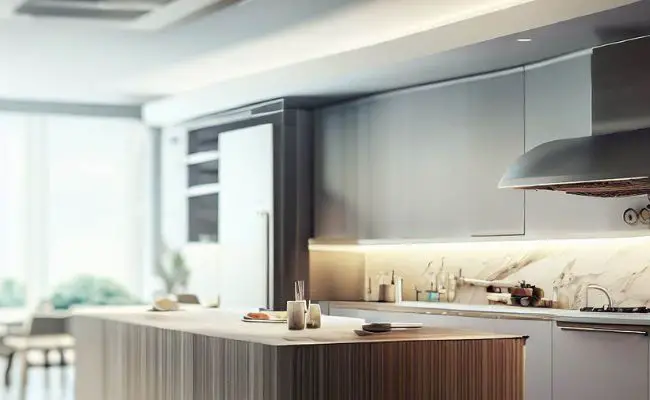Yes, you can use an air conditioner in your kitchen to cool it, but there are a few important factors to consider to ensure safety and effectiveness. In this article, we will explore the possibility of installing an AC unit in your kitchen and provide practical tips to create a comfortable cooking environment. So, let’s dive in!
The Importance of Ventilation
Cooking must be done in an open space or a ventilated room. Fumes, smoke, grease, and other gases like carbon monoxide are emitted during cooking. These byproducts can affect indoor air quality and may pose health risks if not properly ventilated. Therefore, it is crucial to have adequate ventilation in your kitchen to remove these pollutants and maintain a healthy environment.
Placement of the Air Conditioner
When considering installing an AC unit in your kitchen, do not place it right above the gas stove or anywhere near it. Why? Well, oil and other food ingredients evaporate when you cook on a stove, which might create a greasy residue. This residue can accumulate on the AC unit, affecting its efficiency and potentially causing maintenance issues. It’s essential to keep the AC far away from the cooking stove to avoid any unwanted complications.
Protecting the Air Conditioner
While it is okay to put an air conditioner in a home kitchen, keep in mind that dust, heat, and oil particles should not enter the air conditioner. These particles can clog the filters and hinder the AC’s performance. To protect your AC unit from such contaminants, consider installing a kitchen chimney above the stove. A kitchen chimney helps to extract smoke and airborne particles, keeping the kitchen environment clean and reducing the chances of damaging the AC unit.
Location, Location, Location
The location of the AC unit should be taken into account before installing one in the kitchen. Proper placement is crucial to ensure effective cooling throughout the space. Consider positioning the AC in a spot that allows for even air distribution and optimal cooling. It’s recommended to consult with a professional HVAC technician to determine the best location for your specific kitchen layout.
Alternatives to Traditional AC
Cooking in the kitchen can be a hot and uncomfortable experience, but there are alternatives to traditional air conditioners that can help create a refreshing environment. One such alternative is a tower cooler. Unlike fans or air conditioners, tower coolers provide a safe and effective way to cool your kitchen while you cook. They utilize a water-based cooling mechanism, which helps to reduce the temperature without the risk of fire hazards or the need for a complex installation process. Tower coolers are portable and easy to use, making them a convenient option for keeping your kitchen cool.
Tips for Cooling a Room Without AC
Sometimes, you may not have access to an AC unit in your kitchen. In such cases, you can employ various techniques to cool the room naturally. Here are seven tips to help you cool your kitchen without AC:
- Swap Your Light Bulbs: Incandescent light bulbs generate more heat than energy-efficient alternatives. By replacing them with LED bulbs, you can reduce the heat emitted and keep your kitchen cooler.
- Using Fans the Right Way: Positioning fans strategically can create a cooling breeze in your kitchen. Place them near windows to bring in fresh air or set them up to create a cross-ventilation effect.
- Keep the Windows Closed and Covered: During hot summer days, it’s best to keep the windows closed and covered to prevent warm air from entering your kitchen. Use curtains or blinds to block out the sun and reduce heat gain.
- Shut & Insulate Your Doors: Ensure that the kitchen doors are properly shut and sealed to prevent warm air from infiltrating the space. Use weatherstripping or door sweeps to improve insulation.
- Don’t Use the Oven: The oven can significantly increase the temperature in your kitchen. Opt for stovetop cooking methods, such as using a microwave, slow cooker, or grill, to avoid adding extra heat to the room.
- Manage the Humidity: High humidity levels can make the kitchen feel even hotter. Use a dehumidifier or employ natural methods, such as placing bowls of ice or running a fan near a bowl of cold water, to reduce humidity.
- Let the Night Air Cool Down: Take advantage of cooler temperatures during the night by opening the windows and allowing fresh air to circulate in your kitchen. This can help cool down the space before the next day’s cooking adventures.
In conclusion, it is possible to put an air conditioner in your kitchen to create a comfortable cooking environment. However, proper ventilation, careful placement, and protection of the AC unit are essential considerations. Alternatively, you can explore alternatives like tower coolers or employ natural cooling techniques to keep your kitchen comfortable without an AC. So, go ahead and make your kitchen a cool and enjoyable space for all your culinary endeavors!
